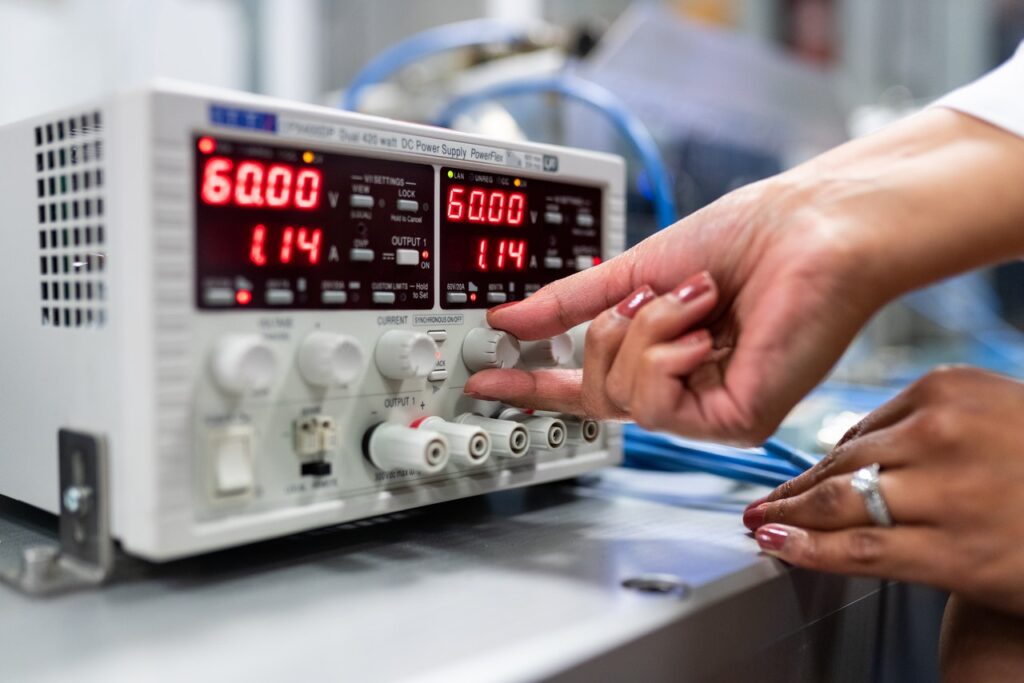Laboratory ovens often play a critical manufacturing role as integral components of hot tensile testing (HTT) systems. Product testing is crucial in this industry where safety is paramount. Recent research shows that poor specification/material selection causes many product failures (65%). General Electric’s recent recall of refrigerators is a case in point. The handles on the doors detached resulting in 37 injuries, including three considered serious.
HTT can help boost quality and reliability by revealing an items tensile strength—a critical material characteristic. Tensile strength reflects a material, product, or component’s resistance to axial tensions or pulling forces. These forces can cause products or components to fail. Put another way, HTT helps determine if a material, component, or product is fit-for-purpose and manufactured to quality standards by providing data on the item’s integrity and safety.
HTT Can Help Boost Product Quality
Building quality and reliability into products or components is a challenge. Quality and reliability in a product, for example, starts in the item’s design phase. That’s when manufacturers set quality standards that they try to attain through the proper control of the manufacturing process.
High temperatures can jack up the thermal stress on materials, products, and components and cause them to fail at the wrong times. HTT provides valuable insights into how materials behave at higher temperatures reflective of end product conditions. But HTT results can vary during testing because of pressure differences or fluctuating temperatures.
That’s where an accurate laboratory oven can help. The oven provides the stability, uniform temperature, and precise temperature control manufacturers need for accurate HTT readings. They can help manufacturers tell how at what point a product or component will react when forces are applied to it through tension.
Considerations When Buying a Lab Oven for HTT
But all lab ovens are not equal, especially when it comes to hot tensile testing. Some are better than others. Below are considerations when buying a lab oven for your HTT system:
- Temperature range
Ideally, you’ll want an oven with a maximum temperature achieved in your testing method or slightly above that. But be careful. Ovens with high-temperature ranges don’t always provide the uniformity and stability needed for testing materials. They can also be costlier to operate. - Chamber selection
The chamber’s dimensions and volume are paramount in many applications. For example, an oven’s chamber needs to accommodate the size and shape of what you’re testing. A chamber area that’s too large wastes space and energy. A chamber that’s too small hampers workflow. - Uniformity & Stability
Uniformity measures the consistency of temperature at various points in the chamber. Cold or hot spots affect accuracy and test results. Stability measures the temperature range over or under a specific set point that the oven’s controller or thermostat maintains. Fluctuating temperature ranges can skew testing results. - Energy Requirements
Determine the capacity and configuration of your power supply and the application’s power requirements before you purchase a lab oven. Then implement any electrical upgrades or modifications needed before buying an oven. - Ventilation
Fumes in a laboratory can be dangerous or undesirable to workers. So, you may have to vent the oven’s exhaust. Some key lab oven features to look for include direct forced-air exhaust through built-in ports, explosion-proof motors, and other safety features that come in handy when fumes are especially volatile. - Materials of construction
Many lab ovens come with stainless-steel interiors and construction to prevent rust and corrosion. Other lab ovens come with plated or galvanized steel for low-cost considerations when a material is less corrosive. Ovens with double-walled construction and good insulation between these chambers operate at less cost, more uniformly, and have a cooler exterior surface, boosting product safety.
Despatch laboratory ovens are ideal for HTT. Known for their high performance, superior uniformity, and consistent results, Despatch’s ovens feature horizontal airflow, which delivers uniform heating across all shelves. Plus, they feature advanced control with help from Protocol 3™, a microprocessor-based temperature and hi-limit controller with a large LCD and real-time clock for auto-start capability.
Not All Lab Ovens Are the Same
Lab ovens facilitate hot tensile testing of products and components under high temperatures. In fact, they’re the backbone of many HTT systems in the manufacturing industry. They can help you quantify how much strain something can take before failing. The last thing a manufacturer needs is to have a material, product, or component fail and cause serious injury to an end-user. That can cost a company dearly.
A well-built lab oven can run for years without significant problems, even with constant use. But all lab ovens aren’t the same. So, it’s worth putting time into understanding lab ovens so you can choose the right lab oven for your application. Keep in mind also that the cost per cubic of a lab foot is a lot less for larger size models. So, it makes sense to buy a larger model if you think your business will grow.
If you still have questions about lab ovens that can help your company conduct hot tensile testing, you can consult our website. Or, you can call our skilled customer service team to assist you. Please call 952-900-6635.
Image by ThisIsEngineering from Pexels






